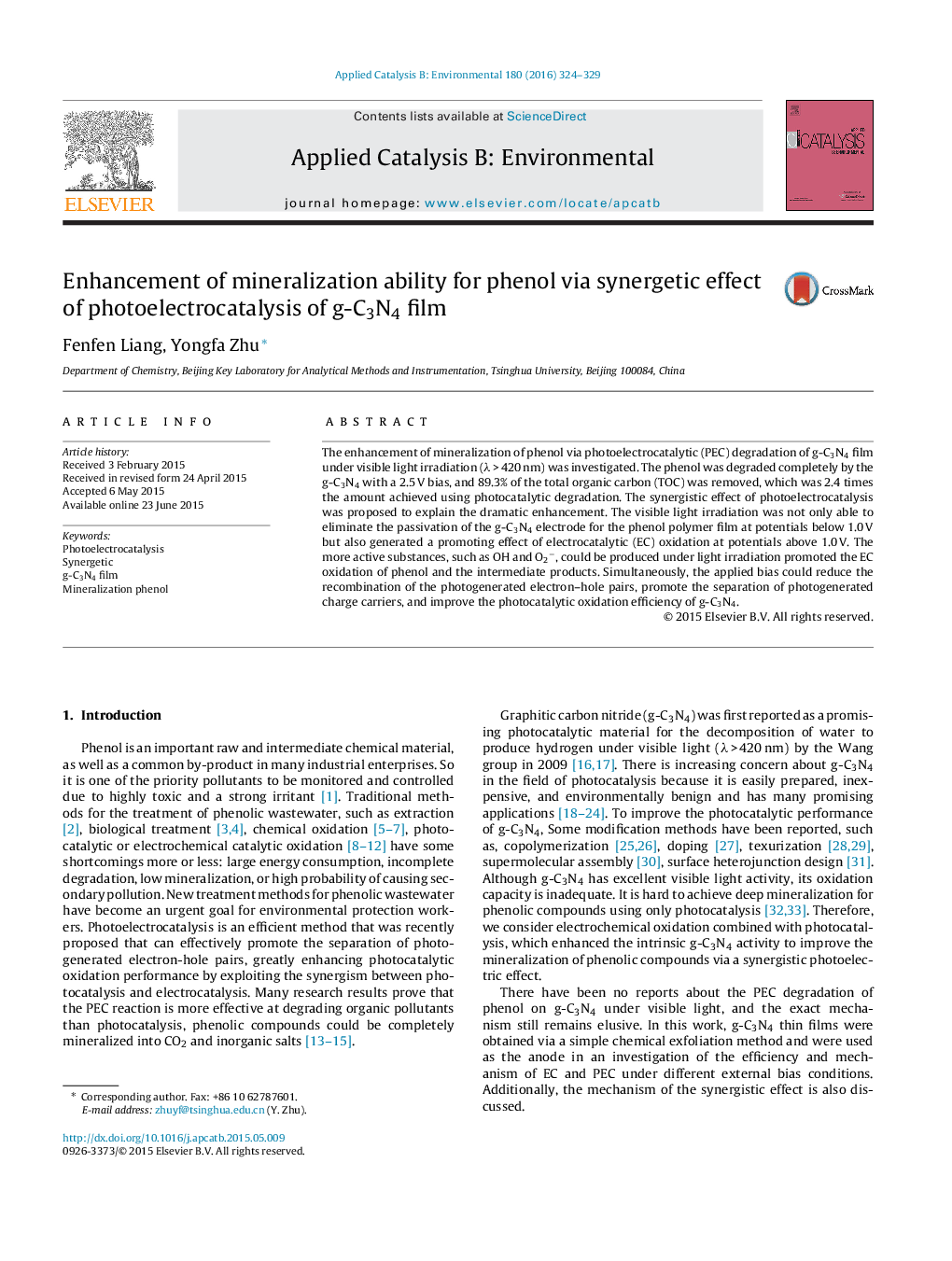| Article ID | Journal | Published Year | Pages | File Type |
|---|---|---|---|---|
| 45248 | Applied Catalysis B: Environmental | 2016 | 6 Pages |
•The g-C3N4 film was synthesized via a simple chemical exfoliation method.•The photocatalytic oxidation efficiency of g-C3N4 was improved on PEC progress.•The mineralization ability of phenol was enhanced via the synergistic effect.•The mechanism of the synergistic effect was illustrated.
The enhancement of mineralization of phenol via photoelectrocatalytic (PEC) degradation of g-C3N4 film under visible light irradiation (λ > 420 nm) was investigated. The phenol was degraded completely by the g-C3N4 with a 2.5 V bias, and 89.3% of the total organic carbon (TOC) was removed, which was 2.4 times the amount achieved using photocatalytic degradation. The synergistic effect of photoelectrocatalysis was proposed to explain the dramatic enhancement. The visible light irradiation was not only able to eliminate the passivation of the g-C3N4 electrode for the phenol polymer film at potentials below 1.0 V but also generated a promoting effect of electrocatalytic (EC) oxidation at potentials above 1.0 V. The more active substances, such as OH and O2−, could be produced under light irradiation promoted the EC oxidation of phenol and the intermediate products. Simultaneously, the applied bias could reduce the recombination of the photogenerated electron–hole pairs, promote the separation of photogenerated charge carriers, and improve the photocatalytic oxidation efficiency of g-C3N4.
Graphical abstractThe enhancement of mineralization of phenol via photoelectrocatalytic degradation of g-C3N4 film under visible light irradiation (λ > 420 nm) was investigated and the synergistic effect of photoelectrocatalysis was proposed to explain the dramatic enhancement.Figure optionsDownload full-size imageDownload as PowerPoint slide
